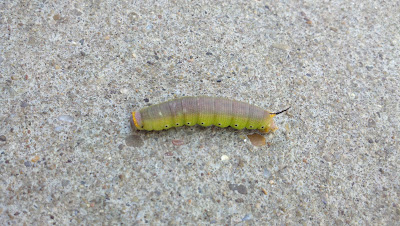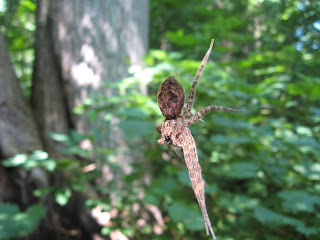Whence a caterpillar crossses your path

I came across a caterpillar today that was too cool to pass up sharing. You're in for a treat. I was walking to the science center on campus today and looking around the fringes of the grass, as per usual, when I spotted a caterpillar on the sidewalk. It was serendipitous because I was just thinking about how as an entomologist, I've been training myself to focus on small things and watch for movement that might be overlooked by someone who doesn't constantly look for bugs. It was an interesting moment. I noticed a small green thing that looked like a leaf, and at first thought it was. A breeze had just blown some leaves across the path, but this was a little different. It's a good thing I don't have a habit of crushing leaves, or this story would be sad. Sidewalk is not its natural habitat. A-ha! My first thought: "Definitely not a leaf." My second thought: "Sphingidae." This caterpillar has very pretty colors, like a grape popsicle shoved into
